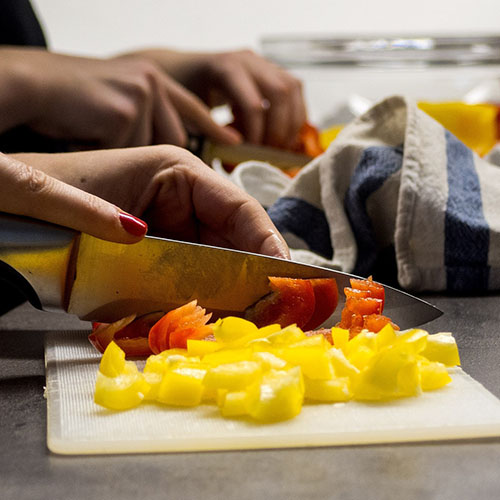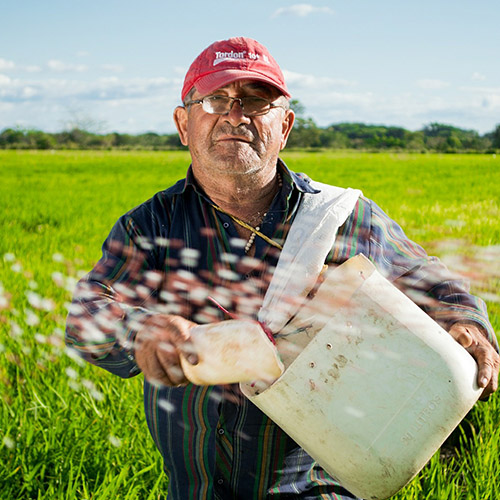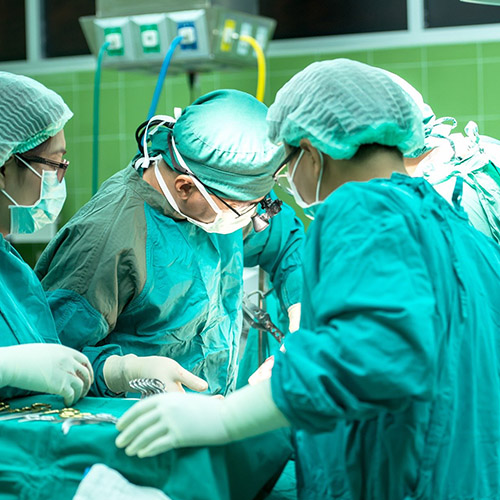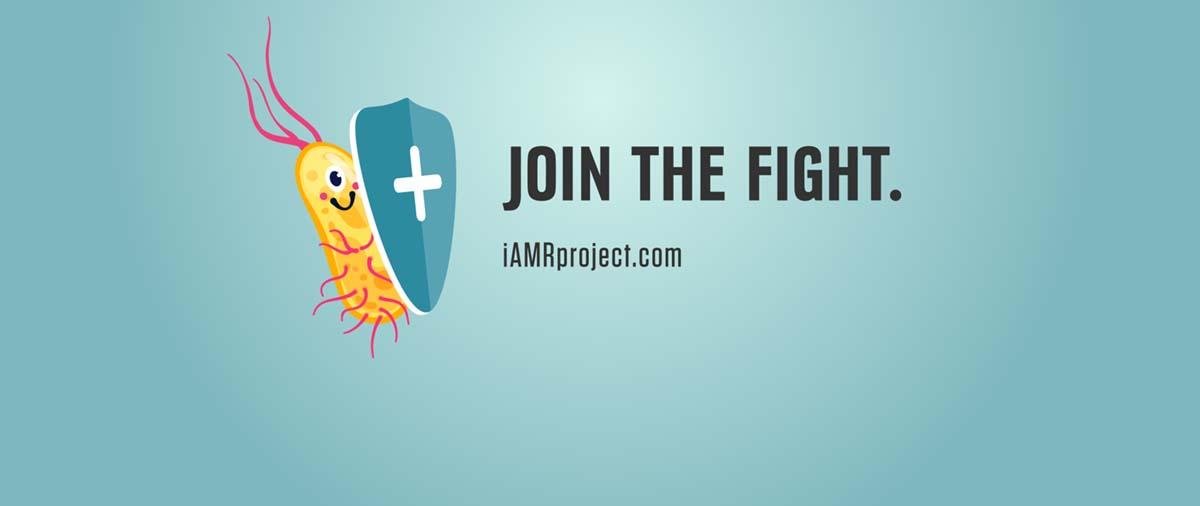The iAMResponsible team is working together with you to find solutions to antimicrobial resistance (AMR). We recognize the broadly shared responsibility for the modern antibiotic resistance crisis, but we believe that AMR also represents a shared opportunity to find and implement solutions. We all have a role in supporting understanding, empowering adaption, and preserving the efficacy of antimicrobials for generations to come.
Antimicrobial Resistance
A 'resistant germ' is a microorganism that can cause illness but can no longer be killed by medicines that used to kill it.
types of microorganism
bacteria
Single-celled organism.
Present in Air, Soil, Water, Plants, Animals and on nearly every surface you touch
Common Disease Examples
Strep throat, Urinary Tract Infection
Treatment
Antibiotics
virus
Smaller than bacteria, cannot survive without a living host
Common Disease Examples
Cold, Flu, AIDS, Chickenpox
Treatment
Vaccination, Antiviral
fungi
Multi-celled, plant-like organism.
Live in soil, on plants, indoor surfaces and on human skin.
Common Disease Examples
Athlete's Foot, Yeast Infection, Ring Worm
Treatment
Antifungals
Drag the treatment to the microorganism it treats.

antibiotic

antiviral

antifungal
Germs are Everywhere, but not all germs make you sick
Pathogenic
A pathogen is a microorganism that can cause disease. Most pathogenic microorganisms cause disease in only one species of plants or animals. For example, Salmonella can cause serious sickness in people, but some chickens have Salmonella living in them all their lives without becoming sick.
Beneficial
Beneficial microorganisms are helpful for preserving human, animal, or plant health. In the “gut” of every living animal, there are trillions of bacteria that help digest food, make nutrients available to the body, and manufacture chemicals like vitamins and enzymes that help systems in the body function effectively. Many of your favorite foods can only be made with the help of microorganisms. Sauerkraut, anyone? Other examples are yeasts used to make bread and beer, or fermenting bacteria used to make yogurt and cheese.
Environmental
Microorganisms are found in soil, air, water and even extreme environments like volcanic vents on the floor of an ocean! While some microorganisms found in these environments may be pathogenic to humans, most are working hard to decompose wastes, make nutrients in soils available for plants to use, or, in the case of the volcanic vents, convert chemicals from the lava into a food source for crabs and other ocean dwellers. Some environmental microorganisms even produce medicines we use to kill pathogens. Did you know that many of our most used antibiotics – like penicillin and vancomycin – came from fungi or bacteria living in soil?!
Microorganisms Adapt Rapidly
When individuals within a species reproduce, genetic information from the “parent(s)” is copied to produce the offspring. A “mutation” occurs when mistakes are made in coping genetic information during reproduction, and the new genetic material is not an exact copy of the original. Some mutations make it harder for the individual with that mutation to survive, while other mutations are beneficial and make it easier to survive.
Over time, every living species on earth changes, adapting to survive in a new environment or to protect themselves from predators. Individuals of a species that are best able to survive under changing conditions live and multiply while the other members of the species die off. We know this as “survival of the fittest”.
Humans typically create a new “generation” every 20 to 30 years. But microorganisms reproduce much more rapidly, creating a new generation every few minutes or hours. With such rapid reproduction, mutations occur in microorganisms over much shorter periods of time than for most other species. For this reason, it is likely that at least some members of the microorganism species will develop a beneficial mutation to improve the survivability of the species as a whole.
Actions YOU Can Take to Prevent AMR

antibiotics
Antibiotics are not effective against viruses.
Follow the directions of a medical professional for when to take or stop taking antibiotics.
Do not share antibiotics.

hygiene
Wash hands frequently using soap and warm water, scrubbing for 20 seconds.
Cover coughs and sneezes.
Throw away tissues after using.
Stay home when you are sick.

vaccinations
Vaccinations help prevent infections in animals and people that could eventually require treatment with an antibiotic.
Vaccinations greatly reduce disease in the overall population.
By getting vaccinated, you contribute to a process called ‘herd immunity’ that can help protect those who cannot be vaccinated.

alcohol based wipes & gels
When soap and water are not available, alcohol-based hand cleaning products (with at least 60% alcohol) are the next best option.
Alcohol kills microorganisms on hands without contributing to antimicrobial resistance; antimicrobials like triclosan and benzalkonium chloride can promote antimicrobial resistance.
How will YOU fight AMR?
Share your plans for helping to address the big AMR problem in our ongoing art challenge, and then check out what others are doing in the gallery below.
Know Your Role
Every day in your community, people you know are working to reduce the threat of AMR. Explore some of their vital AMR prevention roles below and let them know you appreciate them; we are all safer because of the work they are doing. We all use and rely on antimicrobials, so we all have a part to play in preserving antibiotic effectiveness for the next generation.
At Home
As a consumer, patient, or neighbor we can all do our part to reduce antimicrobial resistance and lower our risk of contracting a resistant infection.
AMR may seem like a problem that only scientific experts can deal with but in fact we all can have an impact on the spread of AMR. As medical patients we contribute to the spread of AMR if we insist on or take an antibiotic against our doctor’s advice or if we do not stay up to date with our vaccinations. Similarly, taking action to prevent the spread of infectious diseases will usually help reduce your risk for AMR but extensive use of “antibacterial” or “antimicrobial” products could select for AMR in your home in ways that soap and water would not.


Food Processor
Food processing is a vital part of keeping our food safe and preventing AMR infection.
Foodborne illness is one of the most contracted types of infections across the globe. With growing AMR in common foodborne pathogens like Salmonella and certain strains of E. coli, ensuring food safety during food processing, in grocery stores and restaurants, and in the home has become even more vital.
Pharmaceutical
Research and development of new antibiotics and alternative treatments are important to curbing the threat of AMR.
The increasing resistance of all types of microbial species to currently available medicines is compounded by a slowing development of new antimicrobial drugs. More research and development are needed to identify new antibiotics and study possible alternative treatments or vaccines which could reduce the threat posed by AMR for generations to come.


Advocate
Governments, agencies and concerned citizens – we all play a role in creating strong AMR policy.
AMR is a problem with many causes, but that also means there are many opportunities to impact change. Governments, both in the United States and around the world have started to make policies, enforce regulations, or create new incentives to address AMR. Meanwhile, advocates for industries, healthcare providers, and consumer action groups have all found ways to do their part, and so can you.
Food Producer
Production of livestock, seafood, grain crops,and produce are all important to the AMR story.
Antimicrobials are necessary for producing food. Antibiotics are given to fish and livestock to keep them healthy, and antimicrobial pesticides are widely used when growing crops and produce to reduce food losses from common plant pathogens,like fungi. Using antimicrobials to meet the food demands of the modern world may be unavoidable, but judicious use is important.


Medical Professionals
Medical professionals, from surgeons to certified nursing assistants to veterinarians all have a role in reducing AMR.
AMR has become one of the most serious threats to global human and animal health. Modern medicine is highly reliant on the availability of effective antibiotics to control contagious disease and assist surgical recovery. However, a century of wide-spread antibiotic use has promoted the growth of highly drug resistant pathogens,including a range of species that can persist in clinical settings.
Environmental Protection
Protecting the environment from heightened levels of AMR is an essential part of a One Health approach.
Antimicrobial resistance is a natural phenomenon but increasing environmental AMR may provide new routes for infection in humans and domestic animals. Moreover, unnaturally high levels of antimicrobials in the water or soil can be harmful to wildlife, and environmental ecology.






